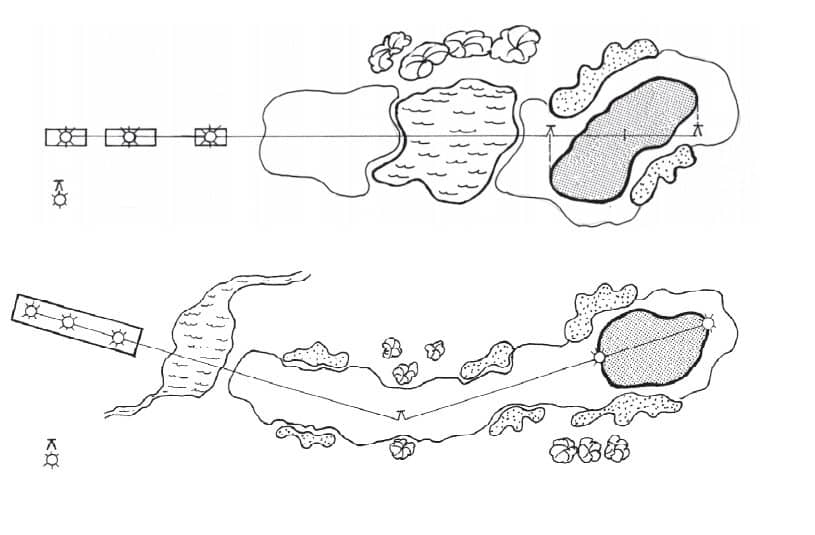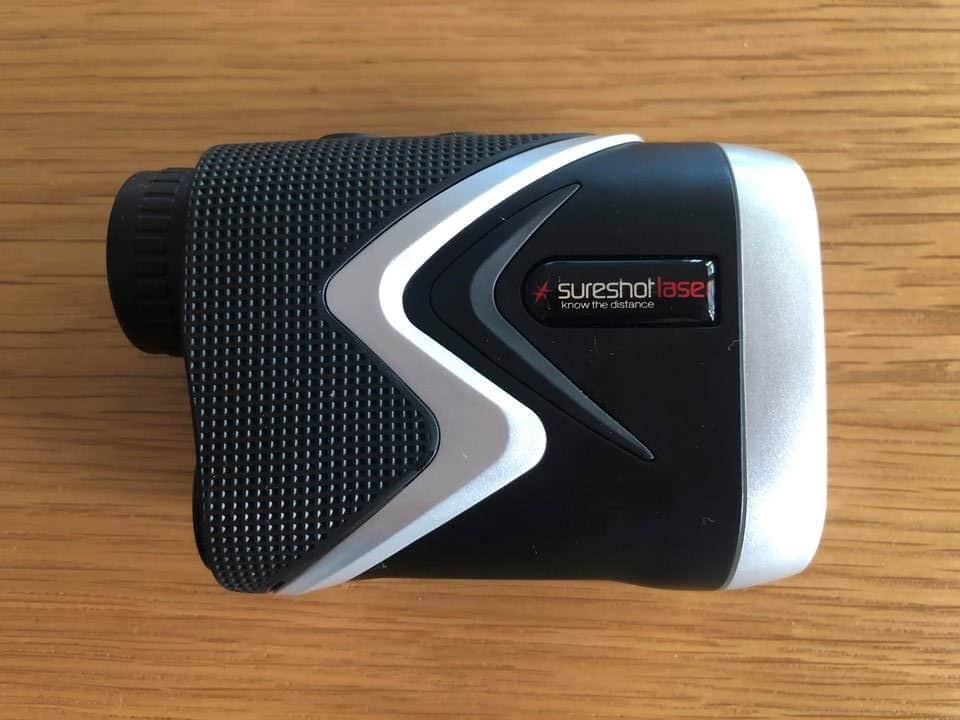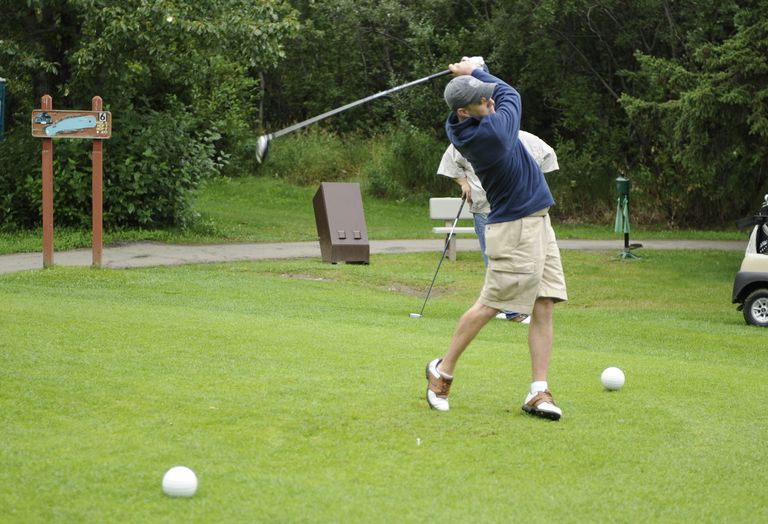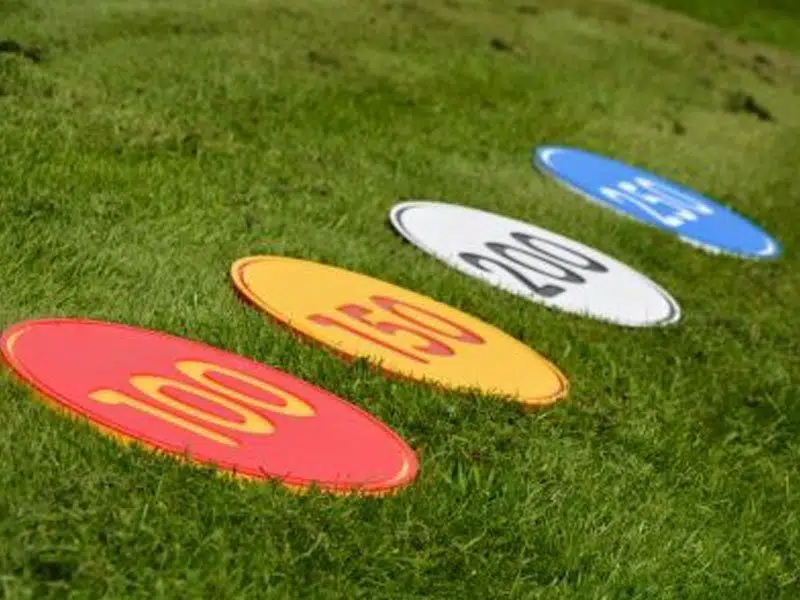If you’re new to the game of golf, you’ve no doubt heard the term ‘yardages’ used regularly while playing with friends, or watching the PGA Tour on TV.
Every time you step onto the tee block, whether it’s from the red, blue, white, yellow or black tee markers, there will more often than not be signage indicating the total yardage of the hole – and if there isn’t, the yardage will definitely be shown on your scorecard.
We all know that yardages measure the distance between your ball and your intended target, but one common question many beginner golfers might have is: Are golf yardages to the front or middle of the green?
Regardless of whether you are playing off the men’s or women’s tees, all golf yardages are measured to the middle of the green. Most golf courses will have fairway markers positioned at 200, 150 and 100-yard increments from the middle of the green to help players decide which club to use when hitting their approach shot towards the hole.
Distance control and accuracy are arguably the two most important skills when playing golf, as a miscalculated distance could see your shot sail over the back of the green and into trouble, or come up well short.
These are called ‘misses’, and the less misses you can have during a round, the better you will score.
Table of contents
How is the yardage measured from tee to green?
According to the USGA, which is golf’s governing body, each hole must be measured horizontally by an EMD (electronic measuring device), surveying instruments or GPS from the permanent yardage marker for every teeing area on each hole of the golf course, to the centre of the green.
Yardages on the scorecard should accurately reflect this measurement.
This is typically done by the course superintendent or ground staff who are trained to do so.
Any hole with a bend, commonly known as a dogleg, must be measured on a straight line from the tee to the centre of the fairway at the bend (known as a ‘pivot point’) – the measurement must continue from that point on a straight line to the centre of the green, or next pivot point if applicable.
In measuring a Par 3 hole or a straight Par 4 or 5, the EMD is positioned at the back centre of the green and readings are taken to a reflector set-up at each of the men’s and women’s tees.

The EMD is then moved to the front centre of the green, and readings to each tee are again taken.
The two readings to each tee are then averaged to determine the distance from each tee to the centre of the green.
Where there is a Par 4 or 5 hole with a dogleg, once the pivot point at the bend has been determined, the EMD is again used to measure to the back centre and front centre of the green, with the average distance then being recorded.
What color are yardage markers on the golf course?
The color of yardage markers at golf courses will likely vary slightly depending on the preference of each club, but the most common colors you’ll see are red, yellow, orange, blue, white or black.
Usually, a red marker indicates you are 100 yards or metres (if you are playing in a country that uses the metric system, such as Australia) from the centre of the green. These markers are sometimes yellow or orange.
A blue or white marker typically means you are 150 yards or metres from the centre of the green, while a black marker is commonly used to show you are 200 yards or metres from the centre of the green.
Distance markers come in all shapes and sizes, but are either in the form of posts lining the edge of the fairway, or circle disks embedded in the middle of the fairway.
How can I measure yardages if there are no distance markers?
One of the most common devices used by golfers to determine distance is a rangefinder – and they are an extremely handy, accurate and relatively affordable way to measure yardages, especially if there are no markers present on the golf course.
Unlike distance markers, which measure to the centre of the green, rangefinders – which work by using a laser to pinpoint distant objects – can be used to lock onto the flag stick and give you your exact yardage to the hole.
This is a huge advantage for players, especially if you are hitting into a wide or deep green where the pin could be located 20 yards from the centre of the putting surface in some cases – this could be the difference between you choosing to hit a seven or eight iron to the hole, and the difference between having a six-foot or 30-foot putt for birdie.
If you’re interested in investing in a rangefinder, we’d highly recommend you read our review of the Sureshot PINLOC 5000ip laser rangefinder – it’s one we’ve gamed for a while now, and have been highly impressed by its performance for how much you pay to purchase it.

What does ‘on the green’ mean in golf?
Getting on the green in golf means exactly that – getting your ball onto the green.
One of the most common indicators of performance that you’ll likely hear golfers use – whether it’s at your local course or on the PGA Tour – is how many ‘greens in regulation’ they record during their round.
Hitting a green in regulation is when a golfer lands their ball on the green two shots under par. On a Par 3, this would mean landing your ball on the green in one shot; on a Par 4 it would mean landing it on in two shots; and on a Par 5, it would mean landing it on in either two or three shots.
The more greens in regulation you can hit, the better chances you have at shooting a low score because it will give you chances to putt for eagle or birdie, or in the worst-case two-putt for your par.
What do the different colors mean on a golf course?
Golf courses regularly use colors to denote distances from the centre of the green, or to differentiate between tee blocks.
As mentioned earlier, the color red is commonly used for 100-yard distance markers, but it is also used universally to indicate the ladies tee block – in other words, the location from where ladies’ players should take their tee shot from.
Similarly, white and yellow are commonly used for 100-yard distance markers, but they are also used to indicate the easier version of the men’s tee block – the white/yellow tee blocks are commonly utilised during stableford rounds, or during weekday competitions as they are easier than playing off the championship tees.
Championship tees are commonly colored blue or black (which are also often used to indicate 150 and 200-yard distance markers, respectively), and are the hardest and longest tee blocks you can play from at any given golf course – they are usually used during Saturday competitions, including stroke rounds, and during club championships.
The reason for this is the blue/black tees are the ultimate test for players on the golf course.

Should I play from the red, white, yellow, blue or black tees?
If you’re playing in a competition, usually the golf club will determine which tee blocks you are to play from on that day.
But if you are playing socially, without entering the competition or a proper scorecard, then you have the choice of which tee block to play from.
While the red tees are usually reserved for ladies, that doesn’t mean women can’t play from harder tee blocks, and vice versa (however, it’s pretty rare to see men play from the women’s tees, unless they are an absolute beginner, or are still a child who can’t hit very far).
My advice would be: if you’re looking just to enjoy a social round with mates, with less stress, then play off the white/yellow intermediate tees – however, if you are seeking more of a challenge, and wish to tackle the hardest set-up the course has to offer, then play off the championship blue/black tees.
At the end of the day, so long as you’re not entered in the competition, whichever tee block you choose to play from is completely up to you.
- TaylorMade SIM2 Max Driver vs M4 Driver: Worth it in 2024? - April 15, 2024
- 3 Ways to Win the Mental Game with the Bridgestone Mindset Golf Ball - March 29, 2024
- TaylorMade SIM Max & SIM2 Max Drivers: Are they Still Relevant in 2024? - March 9, 2024

